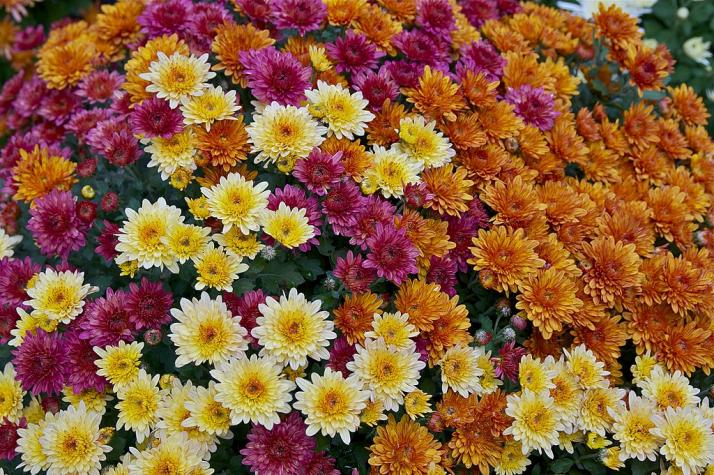COLUMBIA, Mo. – Few flowers signal fall’s arrival more than the cheerful chrysanthemum, or mum, said University of Missouri Extension horticulturist David Trinklein. Mums’ long-lasting blooms put on a colorful display for weeks when other flowers have clocked out for the season.
Mums are one of the oldest known flowers, Trinklein said. The Chinese raised them for ornamental and medicinal purposes more than 2,000 years ago. In ancient Japan, families used a mum insignia on family crests to boast of prominence. Warriors etched images of mums onto their swords. In the eighth century, the emperor placed chrysanthemum as Japan’s official seal.
Mums are more popular than ever thanks to the new varieties developed by plant breeders, he said. A myriad of colors, flower types, and bloom dates abound each year. A relative newcomer, the Belgium (or European) garden mum is a popular choice because of its spectacular size and showy color.
Chrysanthemum is an example of a cultigen. “If not for human intervention, mums wouldn’t exist,” Trinklein says. Plant breeders work to produce plants that bloom during specific times. Mums need long periods of darkness each day to bloom. Historically, most bloomed in mid-to-late summer, depending on cultivar. Now, many bloom late September to mid-October, when cooler weather tends to make flowers last longer.
Garden mums are available in the spring as rooted cuttings established in small containers or during the fall as large, mature plants in or near full bloom.
Trinklein offers tips for fall and spring mums:
Fall mums
- Choose plants that are beginning to show color. These produce blooms for the longest time. Colors fade after heavy frosts.
- Most potted mums are grown commercially in a soilless growing medium high in organic matter. Plant in well-drained soil high in organic matter and water thoroughly.
- After cold weather arrives, cut plants back to ground level and mulch to prevent winter injury.
Spring mums
- Select a well-drained planting site that receives at least eight hours of sunlight.
- Space smaller plants 18 to 24 inches apart to allow for the future growth. Space 30-36 inches apart for more vigorous cultivars.
- Apply a granular fertilizer such as 5-10-5 or equivalent at the rate of 2 or 3 pounds per 100 square feet of surface area, and mix it into the soil. Apply a soluble starter fertilizer high in phosphorus such as 9-45-15 immediately after transplanting.
- Pinch spring-planted garden mums every three to four weeks for bushy, compact growth and more flowers. For most, pinch no later than July 4 to avoid accidentally removing flower buds.
- Garden chrysanthemums need about 1.5 inches of water weekly during the growing season.
- Mulch plants with bark, wood chips or other organic materials. This saves moisture and controls weeds.
- Check for aphids, two-spotted mites and powdery mildew. Garden chrysanthemums are mostly insect- and disease-free.
For more information, visit the National Chrysanthemum Society’s website.
